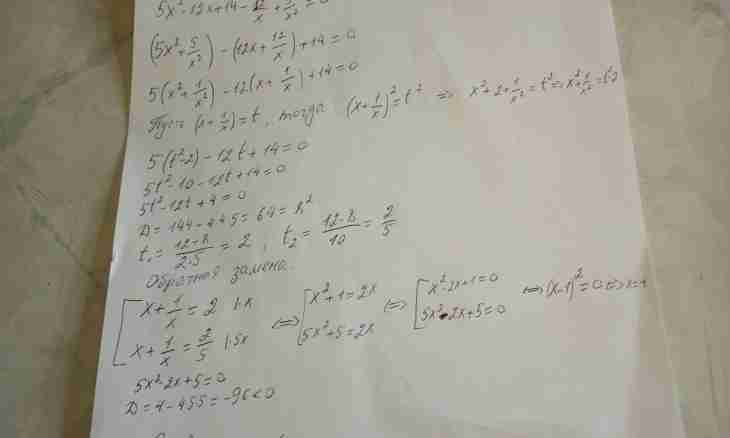The equation represents a mathematical ratio which reflects equality of two algebraic expressions. To define its degree, it is necessary to look at all variables which are present at it attentively.
Instruction
1. The solution of any equation comes down to finding of such values of a variable x which after substitution in the initial equation give right identity - the expression which is not raising any doubts.
2. Degree of the equation is the maximum or greatest exponent of the variable which is present at the equation. That to define it, it is enough to pay attention to value of degrees of the available variables. The maximum size also defines equation degree.
3. The equations happen different degrees. For example, the linear equations of a type of ax+b=0 have the first degree. In them there are only unknown at the called degree and numbers. It is important to note lack of fractions with unknown size in a denominator. Any linear equation comes down to an initial look: ax+b=0 where b can be any number, and an - any, but not equal 0. If you led tangled and long expression to an appropriate type of ax+b=0, it is possible to find no more than one solution with ease.
4. If in the equation is unknown in the second degree, it is square. Besides, in it there can be also unknown in the first degree, both numbers, and coefficients. But in such equation there are no fractions from a variable in a denominator. Any quadratic equation, is similar to linear, comes down to a look: ax^2+bx +c=0. Here a, b and with – any numbers, at the same time number a should not be equal 0. If, simplifying expression, you found the equation of a type of ax^2+bx+c=0, the further decision quite simple and assumes no more than two roots. In 1591 Francois Viete removed formulas for finding of roots of quadratic equations. And Euclid and Diophantus Aleksandriysky, Al-Horezmi and Omar Khayyam used geometrical methods of finding of their decisions.
5. Exists as well the third group of the equations which is called the fractional rational equations. If in the studied equation there are fractions from a variable at a denominator, then this equation - fractional rational or just fractional. To find solutions of such equations, it is necessary to be able to do to reduce only by means of simplifications and transformations them to the considered two known types.
6. All other equations make the fourth group. Them most of all. Here enter both cubic, and logarithmic, and indicative, and their trigonometrical versions.
7. The solution of the cubic equations is also in simplification of expressions and stay no more than 3 roots. The equations having higher degree are solved in different ways including graphic when on the basis of the known data the constructed function graphs are considered and points of crossings of lines of schedules which coordinates are their decisions are found.

